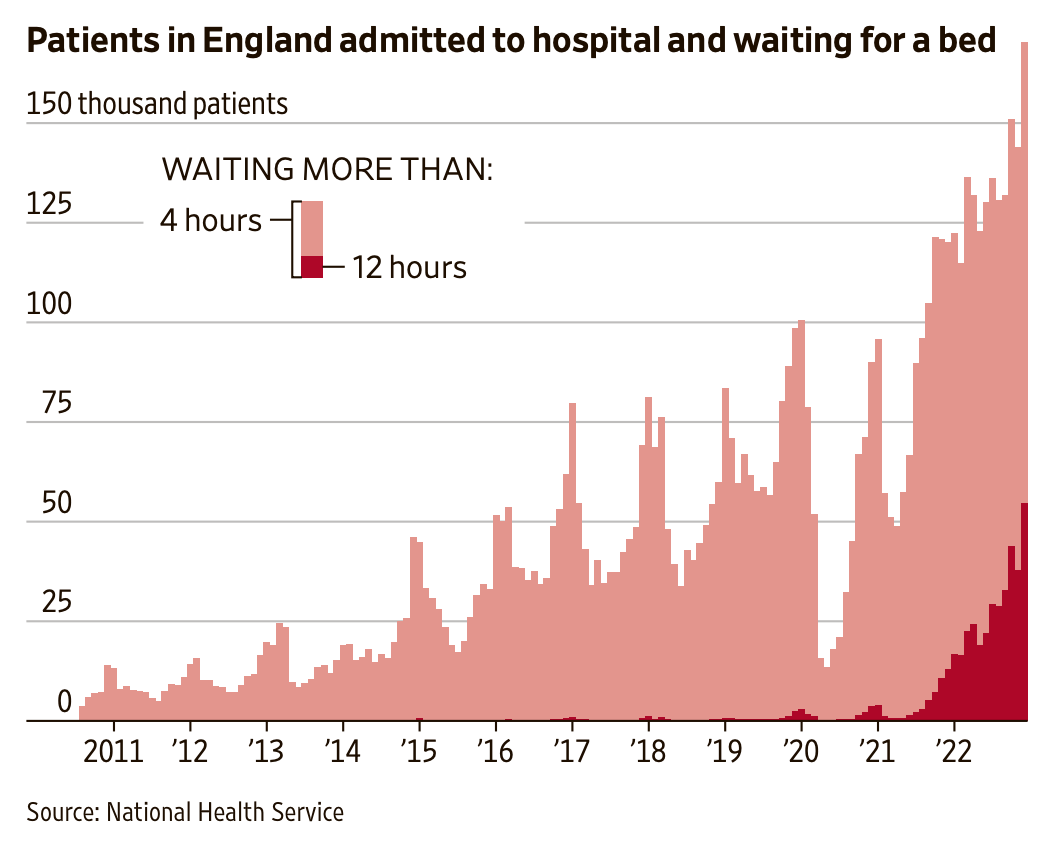It's time for Universal MULTI-PAYER Healthcare!
Why have one when you can have many...
We all agree that the current healthcare system sucks and that some way or another, we should achieve universal healthcare. Thus far, it seems like left of center folks have only either advocated for lame incremental reforms to the current system or, alternatively, a single-payer system. In this article, I would like to present an alternative. I will call this system universal multi-payer healthcare, but it also could be called managed competition or universal healthcare choice.
I think this plan has some unique benefits that allow it to harness the benefits of single-payer while sidestepping its pitfalls.
Part 1: Single-payer has some problems
Ok, let’s start by talking about single-payer.
Single-payer is pretty straightforward. Every man, woman, and child would be enrolled in one federal government-administered insurance plan financed by taxes. This plan would have no premiums and little if any, cost sharing.
Single-payer healthcare has some big advantages over the current healthcare system. For starters, it would give us universal, affordable access to coverage, and that would improve healthcare outcomes, shore up many families’ income security, and cut poverty.
It also would simplify our existing byzantine health insurance system, which burns boatloads of cash on administrative waste. I mean, look at this thing, what a monstrosity! One other big benefit it has, especially over the less ambitious proposals pushed by moderate democrats, is that it would delink insurance from employment, thereby increasing worker mobility. This is actually no small deal because the “job lock” effect, induced by workers not leaving their jobs due to fear of losing their insurance, deprives our economy of billions of dollars of economic output each year.
With those pros mentioned, single-payer systems also face some big and notable issues. Let’s run through them real quick.
Longer Wait Times
You’ve definitely heard this one before. A key line of attack by conservatives against single-payer has been that it would fuel intolerably long wait lines. This criticism isn’t entirely unfounded.
Single-payer systems often aspire to provide low to no-fee comprehensive healthcare to the population. But doing this is extraordinarily expensive. Paying for everyone’s healthcare under the current system, which has cost-sharing, wouldn’t be easy for Uncle Sam. But also, under single-payer, there is often little in the way of deductibles, copays, and coinsurance, meaning that people are more likely to seek out care, even for frivolous reasons.
Because of this immense cost, governments often cut corners to lower the price tag and not require taxes to be quite as high. The result is that the government controls costs by providing a low level of reimbursement to providers for care and imposing rigid price controls on drugs and medical products.
This causes demand and supply to become disjointed, as the quantity of healthcare demanded rises due to being healthcare now being free at the point of service, and the quantity of healthcare supplied falls because the profitability of healthcare providers is depressed by lower reimbursement rates.
This disjointment of the healthcare marketplace inevitably leads to rationing in the form of limits on healthcare utilization and, yes… wait times.
The quintessential examples of a chronic shortage of providers are in Canada and the United Kingdom, where wait times have become increasingly high, caused by particularly frugal spending on their public healthcare systems. Given America’s political institutions and its tremendous aversion to broad-based taxation, it is likely that if it ever were to achieve a single-payer system, it would be similarly poorly funded.
One quick aside is that, as some have noted, the United States has also struggled with excessive wait times for certain kinds of services, but in our case, the cause is not insufficient spending on healthcare (far from it); rather, its awful supply-side policies that severely limit the supply of doctors and healthcare providers.
Less Innovation
Through low levels of payment for services, medical products, and drugs, the government also reduces the profitability of investing in the R&D necessary for medical innovation. This leads to slower advancement of the healthcare sector over time, and this fall in private research is rarely made up for in increased public research.
A recent UChicago working paper estimated that “a 1 percent reduction in revenue” leads to “a 1.5 percent reduction in R&D activity.” They also found that a piece of legislation that would create similar price controls to the ones a single-payer system would effectively impose would lead to “a 29 to 60 percent reduction in R&D from 2021 to 2039,” which would translate to “167 to 342 fewer new drug approvals in that period.”
A similar story remains true regarding medical products and treatments. The effect of reducing the profitability of innovation is getting less of it, and those with ailments will ultimately suffer the consequences as they are deprived of healthcare innovations that would have significantly improved their lives.
Slower Productivity Gains
Single-payer standardizes all reimbursements on a centralized fee schedule, providing the same level of reimbursement to all providers for a service. Proponents tout the simplicity of such a system, but it comes with a major downside: it kills price competition.
Imagine for a moment you were choosing between cereals at the grocery store. Imagine as well that all of the cereals were the exact same price, and ultimately, that price was not paid by you but instead to your parents. Would there be such a thing as price shopping in this context?
No! All prices are the same, and even if they weren’t, they weren’t paid by you, so you wouldn’t really care.
Now, let’s ask a follow-up question. Would then cereal producers have an incentive to find ways to lower costs? In a sense, sure. All companies have the incentive to maximize profit, and lowering production costs can do that. But this market lacks an essential feature. It doesn’t allow the cereal companies that are really good at lowering costs to charge lower prices and force their less efficient competitors to either adapt or perish.
In the long term, that’s a big problem. Our existing healthcare system struggles with this issue already. Healthcare prices aren’t transparent, and for many Americans, price exposure is low. This, in part, explains why healthcare prices have dramatically outpaced inflation over time. Healthcare goods and services, lacking strong price competition, have failed to grow in productivity at the same rate as the rest of the economy, leading to uniquely high-cost growth. This phenomenon is often referred to as Baumol’s cost disease.
Single-payer would not only fail to restore to price competition in our healthcare system. It would make it impossible.
Part 2: What multi-payer would look like
So, if not single-payer, then what? The liberal answer is Universal Multi-Payer Healthcare, sometimes referred to as Managed Competition. Some pretty cool countries in Europe central Europe have this system.
In America, I propose it looks something like the following:
Every American is provided an array of healthcare insurance options to purchase on the individual insurance marketplace. In making shopping, they are granted a government subsidy that will go towards whatever plan they choose. This subsidy will be sufficient to provide them with a high-quality plan, but they will reserve the right to pay more for an even better one if they so choose.
Those who fail to enroll in a plan will be auto-enrolled in a default public insurance plan. This plan will be run on a non-profit basis and will try to compete with the private insurance options in the marketplace.
Insurance plan information will be published on an easy-to-use marketplace website. This website will include each plan’s demographic-adjusted mortality scores (how good they are at keeping their enrollees alive), customer reviews, and any added supplemental coverage or perks the plan provides.
All insurers will be prohibited from charging different premiums to different people on the basis of their age, race, gender, or preexisting conditions. To level the playing field among insurers so that no insurer does worse or better simply because they have sicker or healthier enrollees on average, the government will use a system of risk adjustment and reinsurance to redistribute funds from insurers with naturally less expensive risk pools to those with naturally more expensive risk pools.
A basic insurance package of covered services and goods will be mandated by the government, which will include comprehensive coverage for all essential healthcare needs. Insurers will also be required to include bundles in life insurance with their policies and provide long-term contracts. These requirements will strengthen insurers' incentive to prioritize the long-term health of their enrollees over short-term cost-cutting.
Healthcare claims and payments will be centralized into one unified system, ensuring efficiency, simplicity, and timely compensation.
If these ideas seem familiar, that’s because a weak sauce form of Managed Competition already exists to a limited degree today in the form of the individual state health insurance exchanges and Medicare Advantage. It also might be because I’ve written about healthcare on this blog A LOT.
Part 3: Why multi-payer is preferable
Ultimately, this approach to health insurance would achieve all the pros of a single-payer but without the cons. People who like government insurance could get the same experience they would under a single-payer system by enrolling in the public option. Hell, it actually might be a better experience since the government option will be forced to compete with private insurers.
The risks of underfunding will be less significant as people will always be afforded the option to pay more for better insurance if the government fails to fund the system properly.
The government, no longer having a monopoly position as the payer for healthcare, will reduce the likelihood that stringent and uniform price controls are imposed, preserving the profitability of healthcare innovation.
Private health insurers will be incentivized to experiment with alternative payment systems to cut costs, and if paired with price transparency laws, this could lead to productivity-enhancing price competition returning to healthcare.
I think this is a big win-win-win idea. And that’s all, not to mention the fact that this is probably a much easier lift politically.
What do y’all think? Am I crazy here, or is the best universal healthcare idea one that we seem to never talk about? Let me know!








Lol not me realizing a gazillion typos after publishing it 💀
Risk adjusted vouchers, or universal multipayer, as the best option for healthcare. I agree, as I wrote here: https://www.lianeon.org/p/infographic-healthcare-for-the-21st
healthcare is somewhat of an impossible trinity. We want care to be universal, affordable, and quality…but we can only pick two.
A risk adjuster voucher system balances the above three traits because 1) It doesn’t lead to rationing or depress innovation. 2) It can easily be made universal without a “mandate”….just give people the vouchers…no one turns down free stuff! 3) It incentivizes cost savings.
Some twists I added to my proposal: A reinsurance/excess insurance system for extremely sickly people. To avoid skimping on care for extremely costly individuals, the “insurer” would have cap on liability, the rest absorbed by the government and funded through a sugar-sweetened beverage levy.
Second, the system as a whole should be funded via VAT. A 10 percent VAT would probably be more than enough.